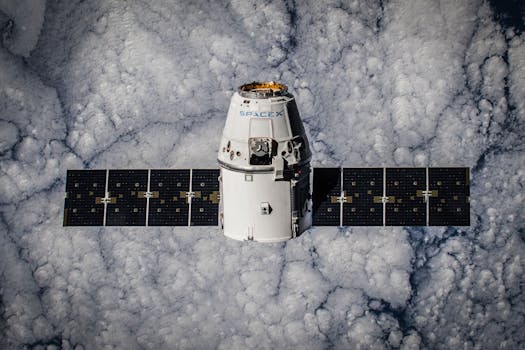Beyond the Atmosphere: The Future of Satellite Technology for Surveillance and Connectivity

Beyond the Atmosphere: The Future of Satellite Technology for Surveillance and Connectivity
Satellite Technology
The future of Satellite Technology holds great promise for Surveillance and Connectivity, with advancements in space exploration and innovation set to revolutionize the way we communicate and monitor our planet. In recent years, we have seen significant advancements in satellite technology, from the development of smaller, more efficient satellites to the launch of constellations of satellites that provide global coverage. These advancements have opened up new opportunities for surveillance and connectivity, enabling us to monitor the Earth’s surface and communicate with each other in ways that were previously impossible.
One of the most significant advancements in satellite technology has been the development of synthetic aperture radar (SAR) satellites. These satellites use radar pulses to create high-resolution images of the Earth’s surface, even in cloudy or dark conditions. This technology has a wide range of applications, from monitoring crop health and tracking natural disasters to detecting illegal activities such as deforestation and piracy. For example, the European Space Agency’s (ESA) Sentinel-1 satellite uses SAR technology to provide high-resolution images of the Earth’s surface, which can be used for a variety of applications including land monitoring, emergency response, and maritime surveillance.
Another area where satellite technology is making a significant impact is in the field of connectivity. With the launch of constellations of satellites, such as those being developed by companies like SpaceX and OneWeb, we are seeing a new era of global connectivity. These constellations will provide high-speed internet access to even the most remote and underserved communities, enabling people to communicate and access information in ways that were previously impossible. For example, SpaceX’s Starlink constellation is planned to consist of over 42,000 satellites, which will provide global coverage and enable high-speed internet access to communities around the world.
Surveillance and Connectivity Applications
The applications of satellite technology for Surveillance and Connectivity are numerous and varied. In the field of surveillance, satellite technology can be used for a wide range of applications, from monitoring the Earth’s surface to tracking natural disasters. For example, satellites can be used to monitor crop health, track the movement of animals, and detect illegal activities such as deforestation and piracy. Satellite technology can also be used for disaster response and recovery, providing critical information and communications infrastructure in the aftermath of a disaster.
In the field of connectivity, satellite technology can be used to provide high-speed internet access to remote and underserved communities. This can enable people to communicate and access information in ways that were previously impossible, and can have a significant impact on economic development and social welfare. For example, satellite-based internet access can enable remote communities to access online education and healthcare services, and can provide critical communications infrastructure for emergency responders and other public safety officials.
Challenges and Opportunities
While the future of satellite technology holds great promise, there are also significant challenges and opportunities that must be addressed. One of the most significant challenges is the risk of congestion in Earth’s orbit, as the number of satellites in orbit continues to grow. This can increase the risk of collisions and other accidents, and can make it more difficult to launch and operate satellites safely.
Another challenge is the need for international cooperation and regulation. As the use of satellite technology becomes more widespread, there is a growing need for international cooperation and regulation to ensure that satellites are used safely and responsibly. This includes the development of standards and guidelines for the launch and operation of satellites, as well as the establishment of international frameworks for cooperation and coordination.
Conclusion
In conclusion, the future of Satellite Technology for Surveillance and Connectivity is exciting and promising. With advancements in space exploration and innovation, we are seeing new opportunities for surveillance and connectivity that were previously impossible. From the development of SAR satellites to the launch of constellations of satellites, we are entering a new era of global connectivity and surveillance. However, there are also significant challenges and opportunities that must be addressed, from the risk of congestion in Earth’s orbit to the need for international cooperation and regulation. As we look to the future, it is clear that satellite technology will play an increasingly important role in shaping our world and enabling us to communicate and monitor our planet in ways that were previously impossible.